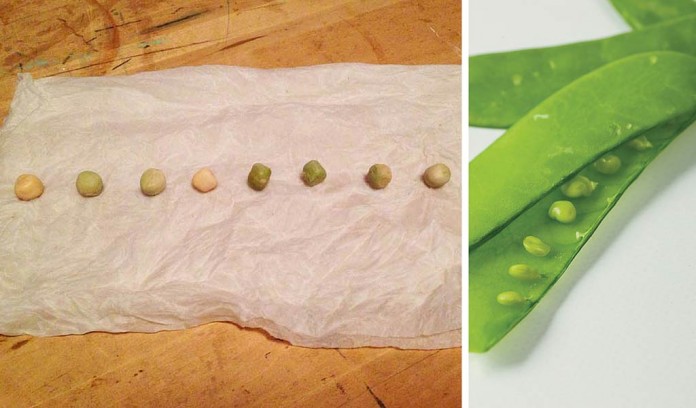Garden seeds are usually good for a year or so after purchase, depending on the variety. If you have garden seeds left over from the last few years, they may still be viable this year.
Oregon State University Extension explains that the only materials you need to test seed viability are a damp paper towel, a plastic bag, a warm spot in your home and a few days to test the seeds.
 Here’s how it works
Here’s how it works
There is more than one way to test seed viability. Here’s a method from Oregon State University Extension:
- Take 10 garden seeds (of the same variety) that you want to test and place them on a damp paper towel. Make sure they’re evenly spaced.
- Roll up the paper towel. Place it in a plastic baggie.
- Leave the baggie in a warm spot in your house, such as the kitchen, for at least two days (five days max).
- After a few days, check the paper towel to see which seeds, if any, germinated.
Oregon State University Extension says that the percentage of germinated seeds is an indicator of the percentage of seeds that will be successful if planted in your garden.
Other testing methods suggest using a larger sample of seeds, like 25 or 50, and lengthening the amount of time to let seeds germinate.
Seed storing tips
How you store leftover seeds can affect their viability. You can save seeds in their original paper bags, since plastic bags can form moisture, potentially causing fungus to grow. Label each seed packet with the year that it was purchased.
The key to storing seeds is to keep them cool and dry. Seeds survive best from season to season when stored at no warmer than about 50 degrees. Humidity should be about 50 percent. Oregon State University Extension suggest placing paper packets of unused seeds in a sealed container. You can place desiccant (like silica gel) or powdered milk at the bottom of the container to remove any moisture. The container of seeds can be stored in the refrigerator, like in the vegetable drawer, or in another cool place in your house over winter.
General viability of seeds
Different seeds will last in storage for varying amounts of time. Below are expected storage lives of garden vegetables and melons, according to Oregon State University Extension and Purdue Extension:
Seeds lasting 1-2 years:
- Okra
- Onion
- Parsley
- Parsnip
- Pepper
- Sweet corn
Seeds lasting 3-4 years:
- Asparagus
- Bean
- Broccoli
- Carrot
- Celery
- Kohlrabi
- Leek
- Pea
- Spinach
Seeds lasting 4-5 years:
- Beet
- Bok choy
- Brussels sprouts
- Cabbage
- Cauliflower
- Chard
- Cucumber
- Eggplant
- Lettuce
- Muskmelon
- Pumpkin
- Radish
- Squash
- Tomato
- Turnip
- Watermelon
Annual flower seed can be saved and stored, too. Purdue Extension lists common annuals and their expected storage lives here.
Learn more about saving seed
If you’re interested in saving seeds from your garden harvest, Farm and Dairy online columnist Ivory Harlow explains how to choose which seed to save and how to save various types of seed in her seed saving primer. She explains how to save seeds from other vegetables, like okra and corn, in her self-sufficient gardener post.







 Here’s how it works
Here’s how it works






